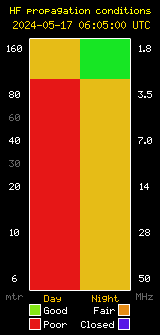Last Thursday’s Technical Mentoring and Elmering Net included discussions about Levi’s (K6LCM) quest to research his grandfather’s ham call, K1ELJ. He contacted AARL and they indicated that they could help but he hadn’t heard from them as of Thursdays mentoring net. Levi asked all who were listening if they had any databases, knowledge or other resources that could help him with his search. Harry (K6PDQ) said he has a QRZ CD ROM from 1995 but Levi didn’t think his grandfather renewed his license after the 1960’s. Lee (W6QYS) mentioned that he has 1960 and 1967 AARL call books and Justin (K6LPZ) said he has many old books and would take a look for K1ELJ. Brian (K6BPM) brought up www.hamcall.net which Levi thought he may have tried. A couple folks found the call and K1ELJ but is was assigned to someone other than Levi’s grandfather so he’s going to do further research make sure he’s looking for the correct call. Good luck Levi!
Then the focus was on Ken’s (K6KEN) question as to why Dave (K6HWN) was operating as W6HUT. Dave filled him in on the fact that Reg Dawe (W6HUT) was a friend and mentor to Dave and many local hams back in the day and now the call is registered to the Reg Dawe Amateur Radio Association. The call is used during the Reg Dawe Memorial Cuckoo Net every weekday morning at 0800 and during the Technical Mentoring and Elmering Net every Thursday evening at 1800, as a gesture to remember Reg’s good naturedness and mentoring to so many hams that he came in contact with.
Ken also inquired as to the use of Reset, Break, and “Mine” that he’s become accustomed to hearing during our nets. Dave explained “Break” is a standard ham term meaning the breaker needs to relate priority traffic of different degrees including life threatening emergencies. “Reset” is used when a comment is lengthy so that the repeater isn’t timed out and listeners know there is still more content to follow. The K6TZ repeater will time out if a carrier signal is not dropped within 3 minutes so that if a radio is being keyed accidentally or a malfunctioning radio is transmitting out of control the repeater isn’t locked out to all other traffic. The term “mine” was derived by Dave (K6HWN) after he begins a transmission and it’s become quite useful in our nets. The way he uses it is when he begins a transmission he’ll start talking and say “mine” and let the carrier drop for a few seconds to make sure he’s not doubling with anyone else and that air is indeed his. If no one else is hear he’ll continue his with his traffic. It’s very useful and helps to avoid traffic “jams” if you will.
Finally Garrett (AG6RQ) asked for advice about working DX and breaking into a pileup and / or managing a pile up. For breaking into a pileup Eric (K6HMD) recommended being patient and polite, possibly transmitting slightly off frequency and the use of “spotters”. Dave (K6HWN) recommended either starting your transmission early so yours is heard before others, or waiting until the last call is sent and then transmitting in hopes the DX station will hear your call after all the confusion. Tune in next week when we’ll talk about the other side and managing pileups!
Tune in to the SBARC Technical Mentoring and Elmering Net this Thursday March 12th and see what interesting questions will arise or ask some of your own! All club members and visitors are encouraged to check in to the Technical Mentoring and Elmering net each week and join in with questions and /or answers to and contribute the knowledge of new and seasoned amateur radio operators alike.









